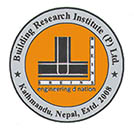
Today (NST)
Friday, Apr 25, 2025
Smart Search
Please post in your Technical Queries, Comments & Suggestions to Contact us......
Advertisement

For Advertisement
|
|
| Subscribe to BREINS Sci-Tech |
| Visit this group |

Concrete Technology
Classification
of Coarse Aggregate
Uncrushed gravel or stone which is the result of natural disintegration
and crushed gravel or stone are usually called the “Coarse Aggregates”.
As mentioned earlier, coarse aggregates are stones that are retained
on 4.75mm sieve. Nearly all natural aggregates originate from bed rocks.
There are three kinds of rocks, namely, igneous, sedimentary and metamorphic.
In such, many properties of aggregate depend on the properties of the
parent rock itself.
Coarse aggregates are classified into two main groups: (i) single-size aggregate and (ii) graded aggregate. Single-size aggregate is based on a nominal size specification. It contains about 85 to 100 percent of the material which passes through that specified size of the sieve and zero to 25% of which is retained in the next lower sieve. A graded aggregate contains more than one single-size aggregate.
Size of Coarse Aggregate
Size of the gravel affects several aspects: mainly strength & workability.
The use of largest maximum size of aggregate practicable to handle under
a given set of conditions could be used. Using the largest possible
maximum size will result in:
(a) reduction of the cement content
(b) reduction in water requirement
(c) reduction of drying shrinkage
While choosing the maximum size of aggregate it should not be greater than one-fourth of the minimum thickness of the structural member. Also it is restricted to 5mm less than the minimum clear distance between the main rebars or 5mm less than the minimum cover to the reinforcement.
Shape of Coarse
Aggregate
Shape of three dimensional irregular bodies as coarse aggregate is difficult
to describe; but is the vital property affecting the workability of
fresh concrete and also its strength and durability. The characteristic
of parent rock from which coarse aggregates have been produced and also
the type of crusher used for crushing influence the shape of coarse
aggregates. Rounded, Angular, Flaky, Elongated and Irregular are some
types on shapes of coarse aggregates. Rounded particles are fully water-worn
or completely shaped by attrition. Angular particles possess well-defined
edges formed at the intersection of roughly planar faces. Flaky particles
have thickness small relative to the other two dimensions. Elongated
particles are usually angular of which the length is considerably larger
than the other two dimensions. Irregular particles are naturally irregular,
partly shaped by attrition and having rounded edges.
At a given water-cement ratio, rounded aggregates demands lower cement content because of its least surface area for a given volume which is called “specific surface area”. The higher cement demand in case of angular aggregates is offset to some extent by the higher strength and durability because of better interlocking. Flat surfaced particles such as “flaky” & “elongated “ones, having a larger specific surface area makes very poor concrete. Water demand and cement requirement for a given strength is higher for such particles. Presence of such particles is highly objectionable in a good concrete.